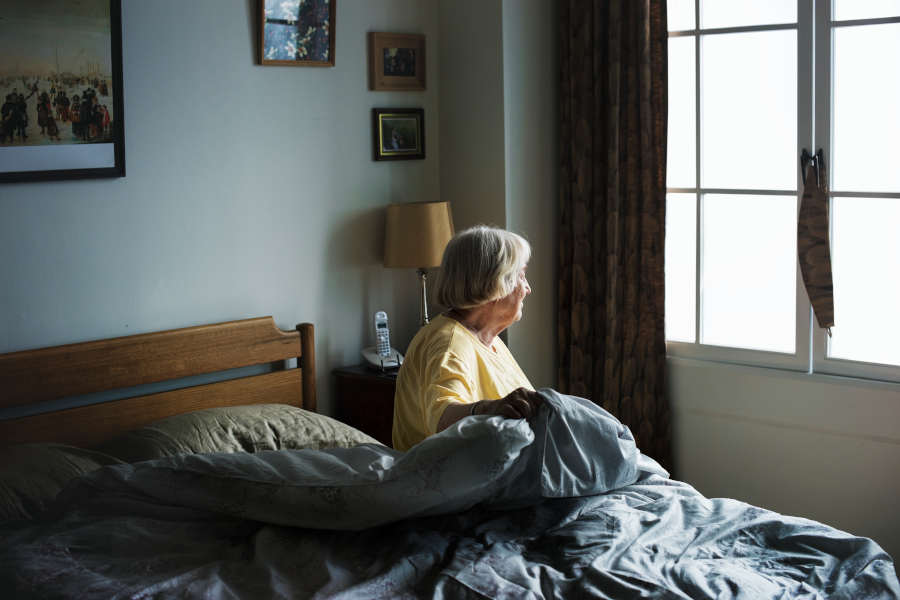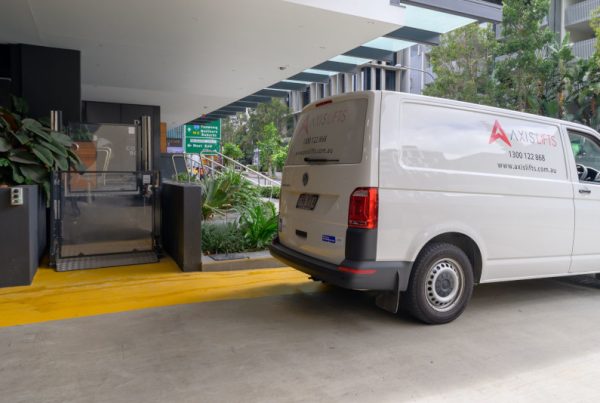We spend our whole lives fine-tuning our homes, modifying the landscaping and sprucing up our interiors. So when the onset of old age becomes a stark reality, it’s natural to want to continue living in your “castle.”
But reduced physical mobility, frailty, and diminished eyesight can make life at home challenging for the elderly. Not only does living at home become inconvenient, but it gets downright dangerous as we become susceptible to potentially deadly falls.
The good news is you don’t have to start looking at an aged care facility just yet. By future-proofing your property against the onset of old age, you can safely remain at home well into your twilight years.
In this post, we’re covering a variety of ways you can modify your home to make it safer and more convenient for your senior years.
Safeguard your steps
 Not only are steps tiresome on old legs, but they can also pose a serious tripping hazard. As our eyesight diminishes, it becomes harder to see the edge of the step. Throw in wonky knees and reduced coordination, and you’ve got a recipe for falls.
Not only are steps tiresome on old legs, but they can also pose a serious tripping hazard. As our eyesight diminishes, it becomes harder to see the edge of the step. Throw in wonky knees and reduced coordination, and you’ve got a recipe for falls.
For smaller steps, such as the front porch, consider installing a ramp. These relatively low-cost modifications are easy-to-use, safe, and wheelchair friendly. If a ramp isn’t feasible, you could paint the edge of each step yellow (for better visibility) and install handrails and non-slip pads.
Consider a lift
 The last thing you want is to lose access to the top storey of your home. But for a multi-floor house, it’s not practical (or safe) to install a ramp over the top of a staircase.
The last thing you want is to lose access to the top storey of your home. But for a multi-floor house, it’s not practical (or safe) to install a ramp over the top of a staircase.
Thankfully, there is a practical solution: the residential lift. With the push of a button, the elderly homeowner can travel between floors in a safe and timely manner. A residential elevator lets you reclaim your whole house—no more neglecting the upper levels out of fear or exhaustion.
While a lift is a significant investment, it’s less expensive than you think. A skilled team from a reputable specialist can install the modification rapidly with minimal disruption. Plus, it’ll add value to your home should you ever need to sell.
Modify your bathroom
 Nearly one in three elderly Australians have suffered a fall in the last 12 months, and the vast majority occur in the bathroom. But with a few well-planned modifications, you can greatly reduce the likelihood of a nasty bathroom slip.
Nearly one in three elderly Australians have suffered a fall in the last 12 months, and the vast majority occur in the bathroom. But with a few well-planned modifications, you can greatly reduce the likelihood of a nasty bathroom slip.
Non-slip mats should be your first step. Widely available online or at any decent hardware store, these grippy pads help you remain sure-footed on a wet tile floor. Add some sturdy grab rails around the toilet, shower and tub to improve safety during your everyday hygiene routine.
A walk-in shower or bathtub will make bathing safer and more manageable, although these complex modifications don’t come cheap. If you need a cost-effective alternative, a wall-attached shower seat adds stability and can be flipped up to save space.
Kitchen modifications
 The kitchen becomes increasingly tricky to navigate as we age and presents a risk for falls, injuries, and burns.
The kitchen becomes increasingly tricky to navigate as we age and presents a risk for falls, injuries, and burns.
If possible, position your favourite appliances in a tight triangle shape to minimise the walking distance between them. Ensure microwaves and other everyday essentials remain at counter height so you don’t have to stretch. Pull-out draws are preferable to outward opening doors as they negate the need to bend down low and rummage through a deep cupboard.
Don’t neglect good lighting, which improves safety and simplifies cooking. Aim for warm white light bulbs between 7,000 and 8,000 lumens. Also, place a few non-slip mats by the sink if you tend to splash water on the floor.
The flooring and doorways
 Although they might look nice, thin rugs on a smooth hardwood floor will slide out underfoot—they’re a prevalent tripping hazard. Either go without or purchase new rugs with a rubber underlining.
Although they might look nice, thin rugs on a smooth hardwood floor will slide out underfoot—they’re a prevalent tripping hazard. Either go without or purchase new rugs with a rubber underlining.
If you’re thinking of re-doing the flooring, aim for a grippy textured surface that doesn’t become slippery when wet. A comfortable, hardwearing carpet is your best bet, though materials like cork, linoleum, laminates, and vinyl will do.
Ensure the joins in your doorways sit flush with the floor to prevent falls. Wheelchair-bound residents may need to widen their doorways to create enough room to squeeze through.
The bedroom
 Many modern beds sit quite low, which puts too much strain on old bones. Aim for a bed frame and mattress that’s high enough to sit on but doesn’t require a strenuous climb. Your bed posts or some custom-built bed sticks can act as anchor points to help you clamber in and out.
Many modern beds sit quite low, which puts too much strain on old bones. Aim for a bed frame and mattress that’s high enough to sit on but doesn’t require a strenuous climb. Your bed posts or some custom-built bed sticks can act as anchor points to help you clamber in and out.
A bench seat and senior-friendly dressing aids will make putting on your clothes much easier in the morning. Consider replacing your low-lying cupboards and wardrobes with more accessible pull-out drawers.
An easy-to-grasp handrail between the bedroom and bathroom is helpful for those sudden midnight urges.
Regain your second floor with a residential lift from AXIS Lifts
With a combined 94 years of experience in the industry, AXIS is Queensland’s leading residential and commercial lift supplier. We specialise in installing prestige lifts at affordable prices.
Contact us today for a free no-obligation quote.



